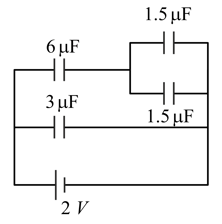Embibe Experts Solutions for Chapter: Electrostatics, Exercise 1: Level 1
Embibe Experts Physics Solutions for Exercise - Embibe Experts Solutions for Chapter: Electrostatics, Exercise 1: Level 1
Attempt the practice questions on Chapter 13: Electrostatics, Exercise 1: Level 1 with hints and solutions to strengthen your understanding. Physics Crash Course JEE Main solutions are prepared by Experienced Embibe Experts.
Questions from Embibe Experts Solutions for Chapter: Electrostatics, Exercise 1: Level 1 with Hints & Solutions
The figure shows four situations in which charges as indicated are fixed on an axis. How many situations is there a point to the left of the charges where an electron would be in equilibrium?

Electric field intensity at points in between and outside two thin separated parallel sheets of infinite dimension with like charges of same surface charge density are ________ and _________ respectively.
A uniform electric field of exists in the vertically downward direction. Find the increase in the electric potential (in ) as one goes up through a height of
For which of the following, the superposition principle does not hold?
A charge of is placed on the positive plate of an isolated parallel plate capacitor of capacitance . Calculate the potential difference (in ) developed between the plates.
A capacitor with stored energy is connected with an identical capacitor with no electric field in between. Find the total energy stored (in ) in the two capacitors.
A parallel plate capacitor is connected to a battery. The plates are pulled apart with uniform speed. If is the separation between the plates, then the rate of change of electrostatic energy of the capacitor is proportional to
Each capacitance shown in figure is in . Find the charge on in .

